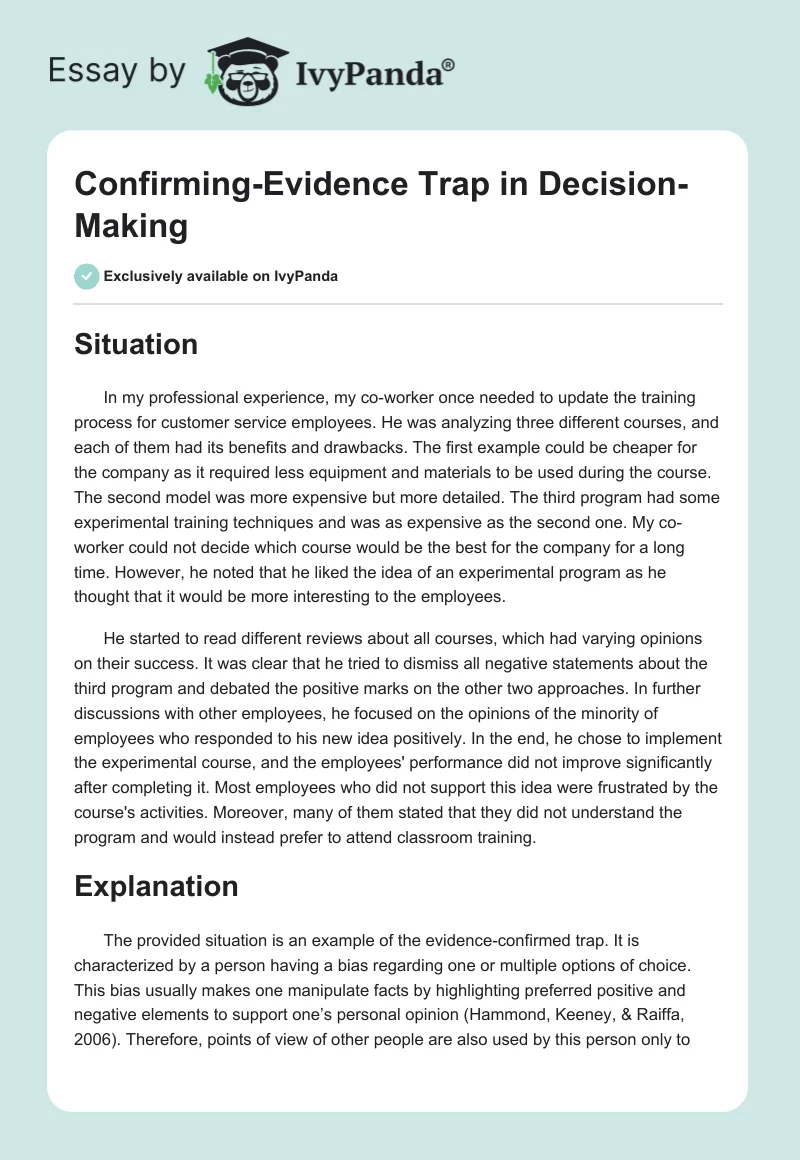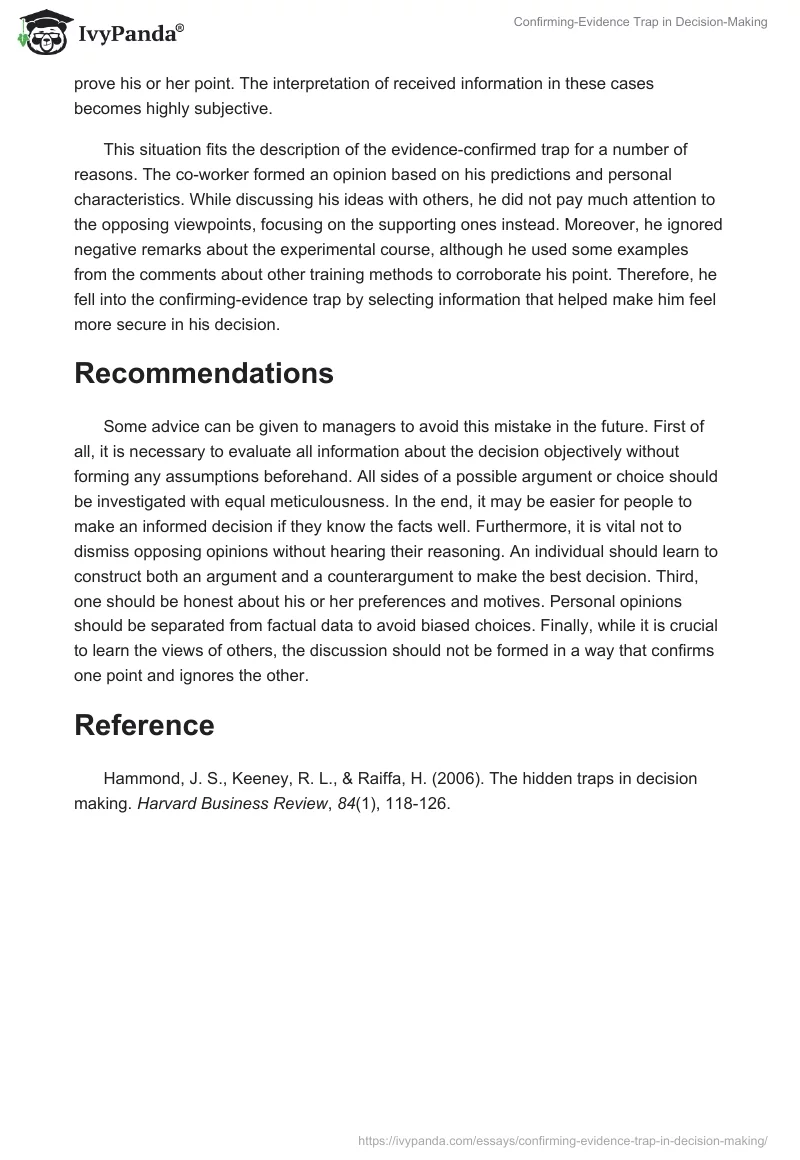Situation
In my professional experience, my co-worker once needed to update the training process for customer service employees. He was analyzing three different courses, and each of them had its benefits and drawbacks. The first example could be cheaper for the company as it required less equipment and materials to be used during the course. The second model was more expensive but more detailed. The third program had some experimental training techniques and was as expensive as the second one. My co-worker could not decide which course would be the best for the company for a long time. However, he noted that he liked the idea of an experimental program as he thought that it would be more interesting to the employees.
He started to read different reviews about all courses, which had varying opinions on their success. It was clear that he tried to dismiss all negative statements about the third program and debated the positive marks on the other two approaches. In further discussions with other employees, he focused on the opinions of the minority of employees who responded to his new idea positively. In the end, he chose to implement the experimental course, and the employees’ performance did not improve significantly after completing it. Most employees who did not support this idea were frustrated by the course’s activities. Moreover, many of them stated that they did not understand the program and would instead prefer to attend classroom training.
Explanation
The provided situation is an example of the evidence-confirmed trap. It is characterized by a person having a bias regarding one or multiple options of choice. This bias usually makes one manipulate facts by highlighting preferred positive and negative elements to support one’s personal opinion (Hammond, Keeney, & Raiffa, 2006). Therefore, points of view of other people are also used by this person only to prove his or her point. The interpretation of received information in these cases becomes highly subjective.
This situation fits the description of the evidence-confirmed trap for a number of reasons. The co-worker formed an opinion based on his predictions and personal characteristics. While discussing his ideas with others, he did not pay much attention to the opposing viewpoints, focusing on the supporting ones instead. Moreover, he ignored negative remarks about the experimental course, although he used some examples from the comments about other training methods to corroborate his point. Therefore, he fell into the confirming-evidence trap by selecting information that helped make him feel more secure in his decision.
Recommendations
Some advice can be given to managers to avoid this mistake in the future. First of all, it is necessary to evaluate all information about the decision objectively without forming any assumptions beforehand. All sides of a possible argument or choice should be investigated with equal meticulousness. In the end, it may be easier for people to make an informed decision if they know the facts well. Furthermore, it is vital not to dismiss opposing opinions without hearing their reasoning. An individual should learn to construct both an argument and a counterargument to make the best decision. Third, one should be honest about his or her preferences and motives. Personal opinions should be separated from factual data to avoid biased choices. Finally, while it is crucial to learn the views of others, the discussion should not be formed in a way that confirms one point and ignores the other.
Reference
Hammond, J. S., Keeney, R. L., & Raiffa, H. (2006). The hidden traps in decision making. Harvard Business Review, 84(1), 118-126.


